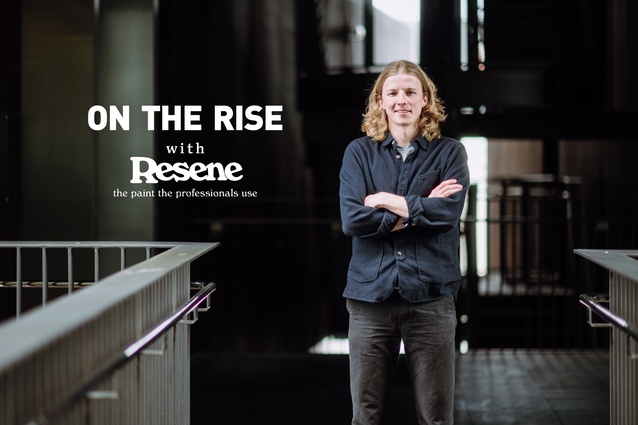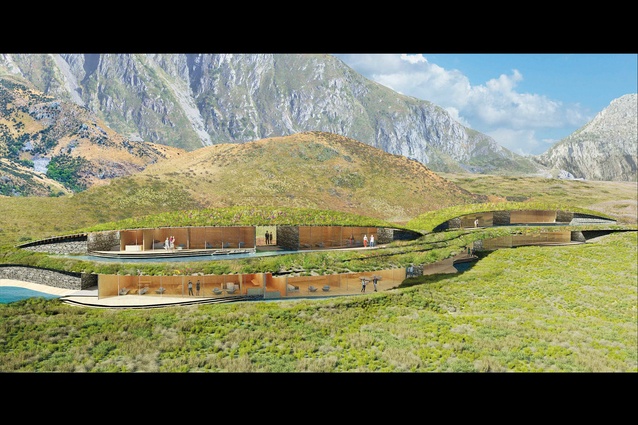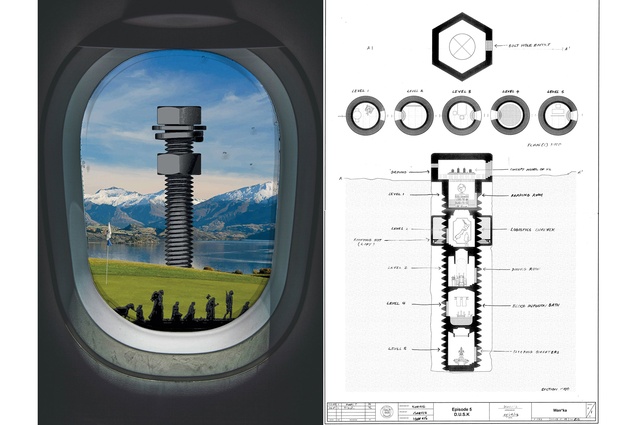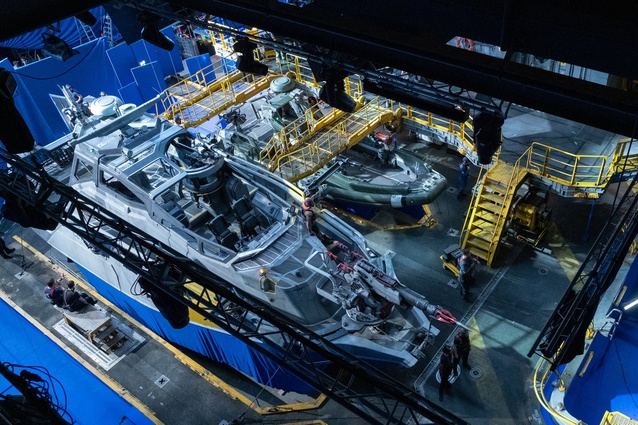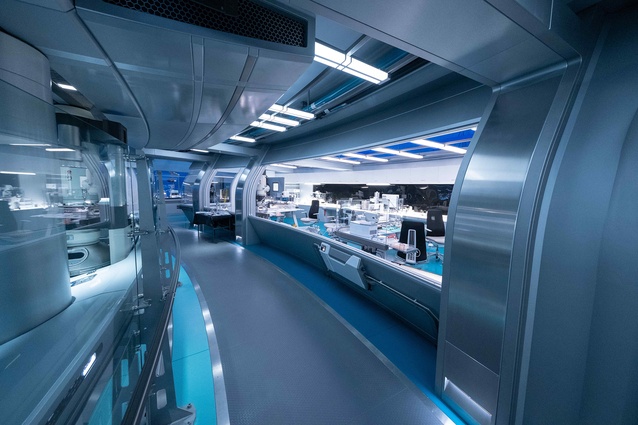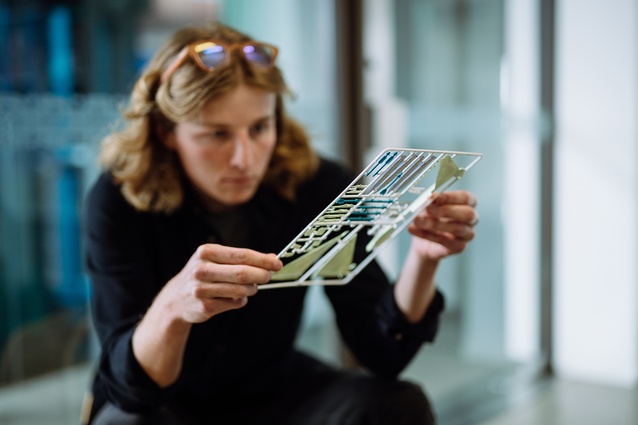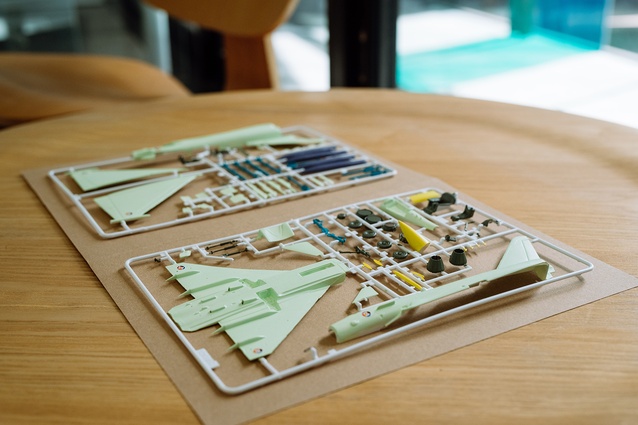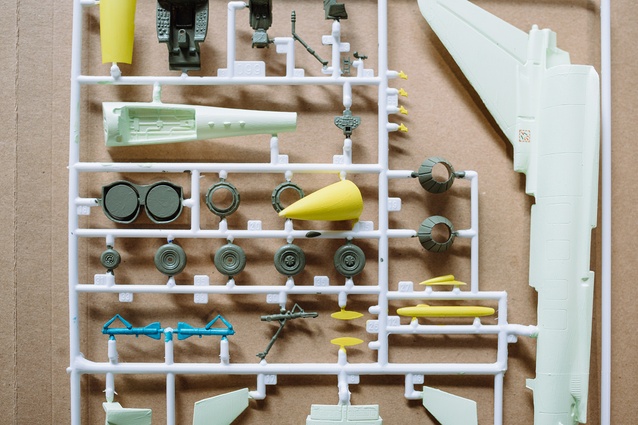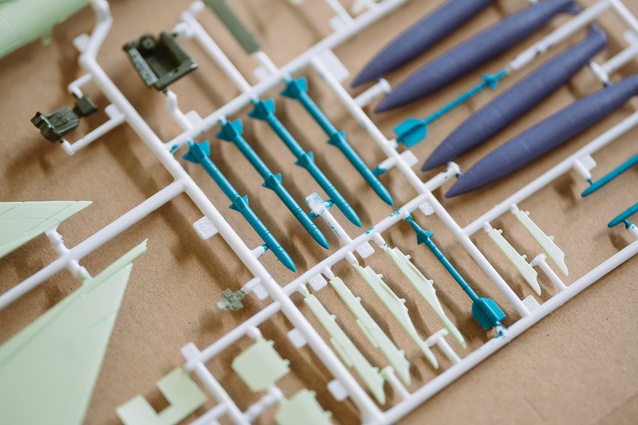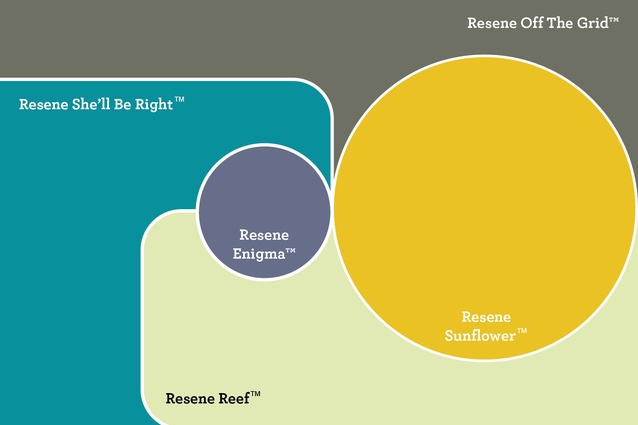On the Rise: Isaac Sweetapple
ArchitectureNow’s On the Rise series, supported by Resene, profiles young designers from across the country who are shaping the future of the industry. In this instalment, we talk to architectural grad Isaac Sweetapple of Sills van Bohemen about designing sets for a big-budget film, what sparked his interest in the bunker typology, and how he balances work and teaching.
Jacinda Rogers (JR): What got you interested in architecture?
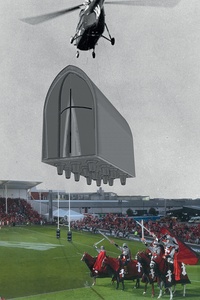
Isaac Sweetapple (IS): I really wanted to do fine arts at university, and my dad was like, “there’s no way we’re letting you go and do that” (laughs). So I chose to study architecture and got to do most of the things I would have done at fine arts school in the process.
I also got to go on an orienteering trip to Europe when I was a teenager and was exposed to a lot of cool buildings, but didn’t pay much attention to any of them. I spent my time ‘planking’ and taking pics of graffiti and motorbikes. I was 15. When I got a bit older, I think I realised how much of a valuable experience that trip was and its effect on me subconsciously.
(JR): What was your main area of interest while studying and has that changed since moving into practice?
(IS): I think in the final couple of years of the master’s degree I was really interested in the language that surrounds architecture. The tales that designers tell to seduce a client or justify their work, and how the resulting architecture goes on to further reinforce those tales. And that’s probably less something that I personally encounter in practice, and more so in teaching or writing.
(JR): Is that what sparked you to start tutoring?
(IS): Not to begin with, but it sparked my return to tutoring in 2020. I first started tutoring at university because I was broke. When I officially entered the workforce in 2019, I felt a real sense of disillusionment toward both academic institutions and the industry itself. Then the pandemic kicked off. I didn’t lose my job but the job I was working on went on hold (it was in the film industry). That’s when I started writing again and I had the time to go and teach and I realised that it’s something I enjoy and that I don’t get this experience anywhere else.
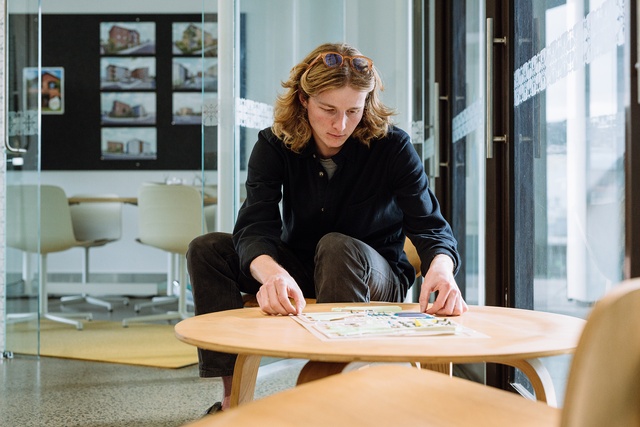
(JR): What classes have you taught and were there any that stood out to you?
(IS): When I was at UOA and studying, I was teaching ‘Architectural Media’ and ‘Environmental Design’. Then down in Wellington at Vic for a little bit I taught this zany ‘Analog Computation, Contextual Hybridity and Adaptive Resilience’ course.
Since moving back to Auckland, I’ve had the opportunity to be part of the team at Huri te Ao, AUT’s School of Future Environments in both their Wānanga and ‘Architectural Intelligence’ courses. It’s really refreshing to see what I’d previously taken as gospel during my education experience be challenged and reinterpreted, by both the academic staff there and the next generation of students.
(JR): Your thesis project ‘New Zealand’s Rural Enigma’ explored ideologies surrounding rural New Zealand. What started you thinking about that?
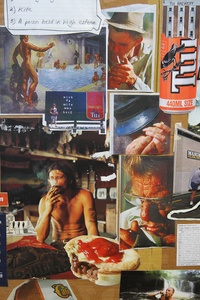
(IS): In the lead-up to that year I was exploring the ways in which various forms of media influence a person’s perception of place and how those ideological frameworks go on to fortify their experience of, and engagement with, the built environment.
So when I went into that final year of my master’s, I wanted to unravel my experience of that process. I was dead set on critiquing the role that architects play in the romanticisation of rural New Zealand. My view was, and still is, that the creation of those spaces has helped forge and perpetuate — at our detriment — particular strains of cultural identity; predominantly Pākehā male ones.
(JR): Tell me about your experience working on the upcoming Avatar films as a set designer, that must have been an interesting job?
(IS): Yeah for sure. Working in film was something I had probably dreamed about as a teenager and I wasn’t quite sure if I wanted to pursue architectural practice at that stage. I initially got the gig on Avatar as part of a six-month internship programme and then stuck around for quite some time after that as a junior set designer in the live-action art department; which involved plenty of 3D modeling and documentation as well as a sprinkling of on-set experience.
The film industry is, as you would expect, a fast-paced work environment that was both thrilling and overwhelming at times. The building methodology used was often based on timber-framed construction and similar digital fabrication practices that I’d taken part in at university; thankfully, there was not an acceptable solution in sight. The physical relationship you have to what you are documenting in film is a lot more tangible than in architecture practice. It was pretty unreal to see the sets that we were designing, being shot or getting built in the studio next door. At any moment, a wild chippie could wander into the office and quiz me about a drawing, so there was this sense of being accountable for what I was doing. It was a great learning environment in that respect.
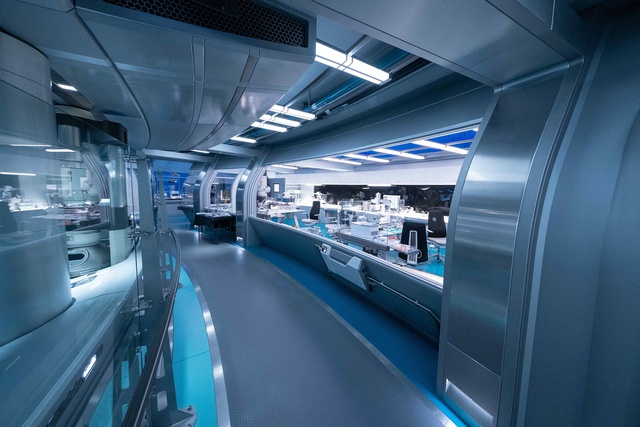
(JR): I wanted to talk about some of the writing that you have done, namely ‘COVID consciousness: Against the bunker’ and ‘Bolthole by the lake‘. What inspired you to write about the bunker typology and is there any relation between this topic and your master’s degree thesis?
(IS): I sort of see the bunker as the bach on steroids. At the end of my master’s, I was interested in understanding what the next sort of typology to plague the ‘playground of the Pacific’ would be. The driving component of my thesis was these five ‘episodes’, each a sardonic reflection on elements of the built environment. The final episode was a bunker designed for Peter Thiel. I built off a lot of the bold claims made by investigative journalist Matt Nippert, from The New Zealand Herald as well as artwork and research by Simon Denny.
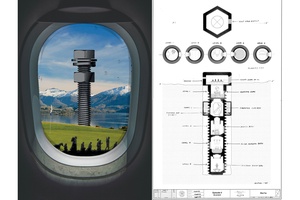
Then when Covid struck, speculation around bunkers in New Zealand began to ramp up. I had a lot of free time on my hands and got asked to write about it by Chris Barton, a lecturer at the University of Auckland. I suppose my take was that the individuals building ‘bunkers’ had been influenced by – among other things – various forms of Government-funded storytelling (Lord of the Rings, 100% Pure etc). As someone that actively proliferates the myths around him, Peter Thiel just happens to be a particularly potent example of this. I really had this bittersweet “I-told-you-so” moment when his resource consent was publicly notified. It felt like he had weaponised Kengo Kuma Architects and their ethos to design what is essentially a hobbit-hole.
I’m still not quite sure where I stand on it all but it’s an interesting dynamic nonetheless. Especially given the role that architects play in the process. It’s pretty ironic that excessive promotion of New Zealand as isolated and pure has manifested the inverse. We learned from the pandemic that while our comparative isolation results in a bit of lag, we’re really just as connected as everybody else.
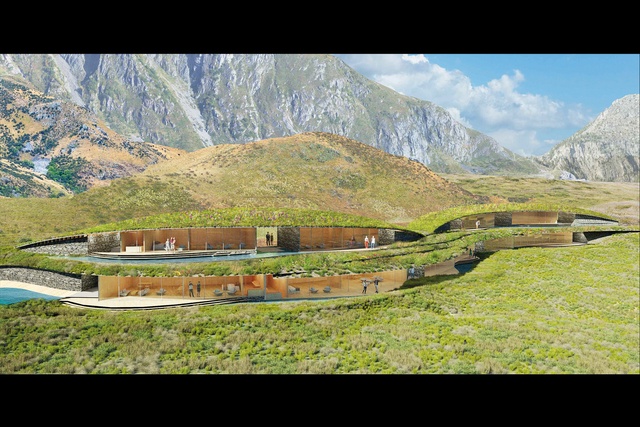
(JR): You’ve had writing published in Architecture New Zealand, ArchitectureNow and ArchitectureAU. How did you develop your writing skills?
(IS): Part of communicating your design intent in architecture is visual, in the images you make, but also in how you talk to those images, or in my case write about them. I think I was quite fortunate that I did a few papers in those final two years, where writing was a key component. It wasn’t formally taught, but it was certainly encouraged. Chris Barton was a tutor of mine in my fourth year and my thesis supervisor as well; he prompted me to write more. I’d ramble on to him about ideas that at the time were never able to be embodied in the design of the architecture itself. So, crafting the written components of my work became key to my practice. Since then, it’s just been something I have chipped away at. My partner Emma has a background in English literature so her guidance plays a fundamental role in my process. I’m not technically a very good writer. I might uncover one or two interesting ideas in a year and I just tinker with them until they become something.
(JR): In terms of your work experience, you worked as a graduate architect at James Fenton Architect and Watgunlow Architects and now you’re at Sills van Bohemen. What have been your takeaways from each of those practices so far?
(IS): I’ve jumped around a bit between practices, and it’s probably not the best way to do things but, from all three, it’s been refreshing to see that there’s this constant willingness to learn new things or attempt to understand other ways of doing things. But they have all had their quirks. James has a really healthy combination of optimism and scepticism for the profession, which I personally resonated with. During my time at Watgunlow with Hamish, I became conscious of all the ancillary aspects of practice that I hadn’t previously considered but now really value: things as simple as biking to work or prioritising family and lifestyle choices outside of the workplace. And now, with Aaron and Christina at Sills van Bohemen, there is a sense that the whole team has shared a set of values that go on to inform the work that we do.
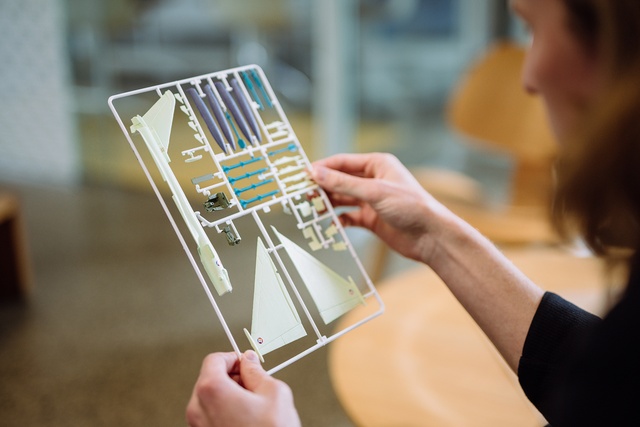
(JR): Lastly, tell me a bit about your mood board and the inspiration behind your Resene paint selections.
(IS): I’ve always appreciated the art of naming within the design process, its ability to give something a sense of identity or even just a bit of sass. So, with that in mind, I’ve picked these colours based on their names and descriptions and painted a 1:72 scale model Eurofighter Typhoon my brother gave me for Christmas with them. I’m not really a fighter plane kind of guy but despite being a product of the military-industrial process, the Eurofighter is a good example of 40 years of multinational collaboration. It would be sick if collaboration in the built environment could be granted that same level of regime transcendence.
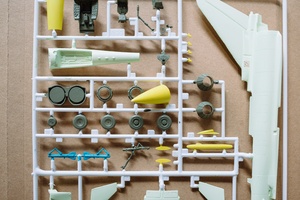
The wings and body are Resene Reef, “a fresh, sharp sprout green, happy and young”. The nose cone is coated in a layer of Resene Sunflower, “a blinding slash of sour yellow”. The interior and turbofan engines are in Resene Off The Grid, “a backcountry mid-green, faded back and merging into the hills.” The payloads are a combination of Resene Enigma, “a curious greyed violet blue” and Resene She’ll Be Right, “a teal blue full of bonhomie and positive affirmations.”
Sills van Bohemen is an architectural practice based in Auckland that specialises in urban masterplanning and social housing with a commitment to environmental and social sustainability. Learn more at svb.co.nz.
See more from the On the Rise series here.

